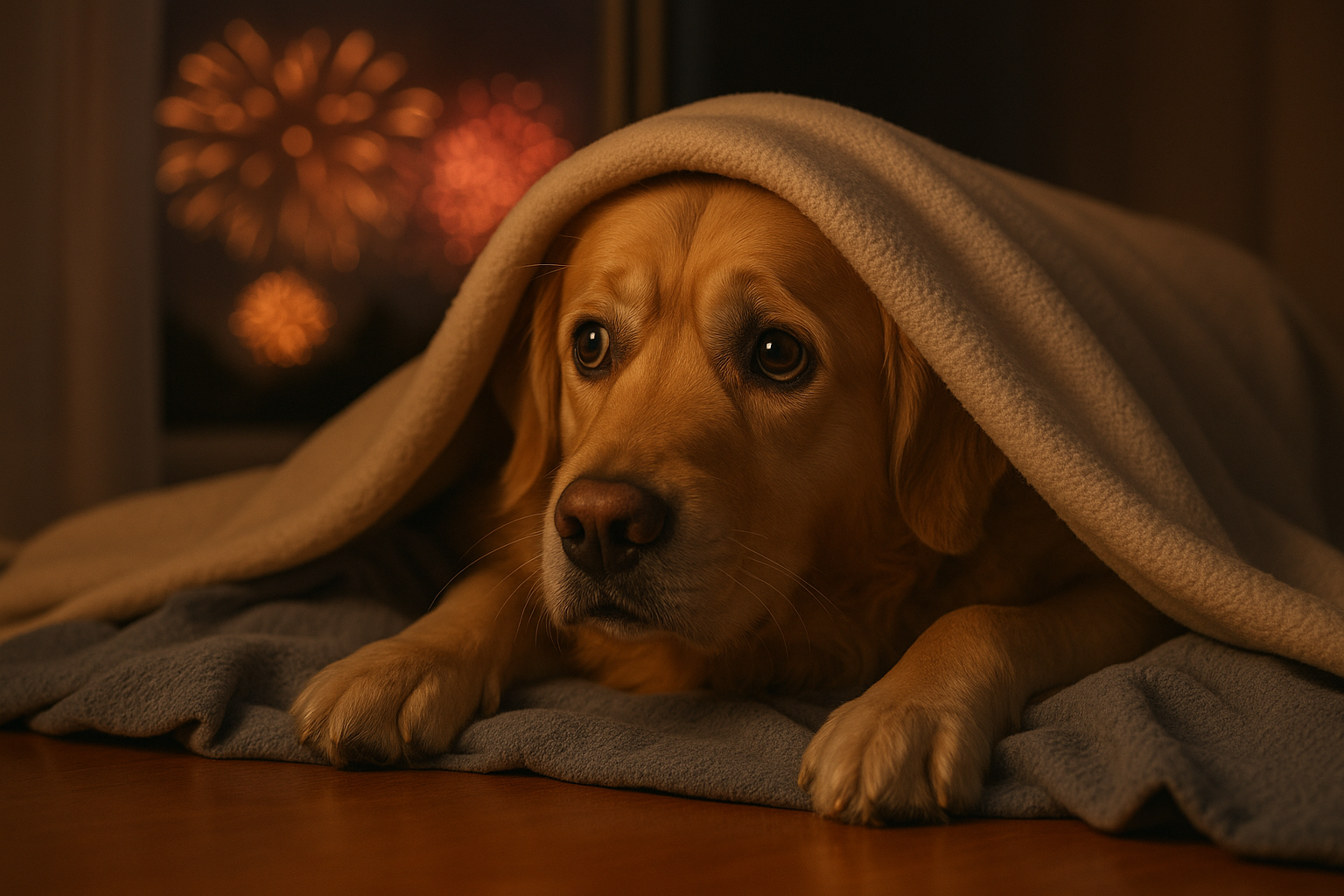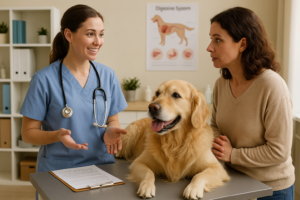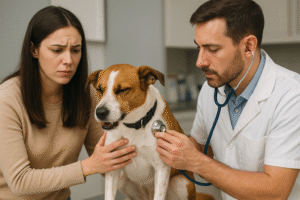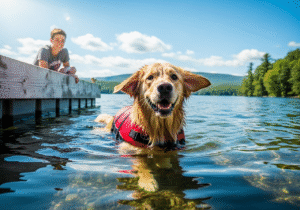Medical Disclaimer: This article is for informational purposes only and does not substitute professional veterinary advice. If your dog is showing signs of anxiety, consult your veterinarian for diagnosis and tailored treatment options.
Table of Contents
Introduction
If your dog trembles during thunderstorms, panics when you’re about to leave the house, or hides from visitors, you’re not alone. Dog anxiety is one of the most common behavioral concerns veterinarians see in clinic and it’s often misunderstood or overlooked. As a practicing small-animal vet in Ottawa, I’ve seen countless dogs come in shaking, pacing, or barking uncontrollably. Often, their owners are unsure if it’s fear, pain, or something else entirely.
Understanding dog anxiety isn’t just about managing symptoms. It’s about improving your dog’s quality of life and strengthening your bond. This guide will help you recognize the signs, understand the causes, and explore proven solutions from training strategies to medication and natural calming aids. Whether you’re dealing with mild stress or severe panic attacks, there’s help available.
Key Takeaways
- Dog anxiety affects a significant number of dogs in Canada, often showing up as trembling, barking, pacing, or destructive behavior.
- Early recognition of anxiety signs like panting, hiding, or clinginess can help prevent long-term stress or behavioral issues.
- The most effective treatments combine environmental changes, behavioral training, and, when needed, medications or supplements prescribed by your vet.
- Professional support from a veterinarian or certified trainer can make a huge difference, especially for severe or chronic anxiety.
- Preventive care, socialization, and daily routines help reduce the risk of developing dog anxiety over time.
What Is Dog Anxiety?
You can also see: https://doglifeexpert.com/canine-hip-dysplasia-7-alarming-facts/
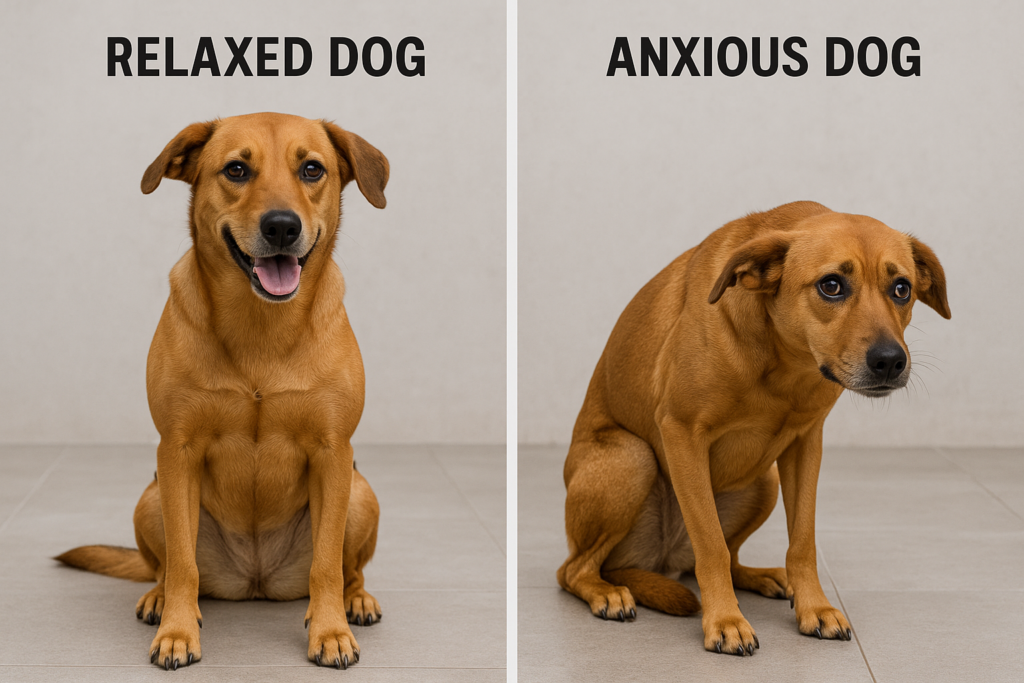
Dog anxiety is more than just occasional nervousness it’s a persistent emotional state that can seriously affect a dog’s behavior, health, and relationship with their family. It’s comparable to chronic stress in humans and may stem from fear, confusion, or past trauma.
Why It Matters
Left untreated, dog anxiety can escalate into severe behavior problems like aggression, property destruction, or self-harm. It may also contribute to physical health issues, including chronic skin conditions or gastrointestinal upset due to prolonged stress.
As a veterinarian, I’ve seen dogs wear down their nails trying to dig through floors during a thunderstorm, or develop chronic diarrhea after long-term anxiety. These aren’t just behavior quirks—they’re signs of a deeper issue.
How Common Is It in Canada?
Based on reports from veterinary clinics and behavior specialists, up to 40% of Canadian dogs show signs of anxiety at some point. According to a 2022 PetSecure Canada survey, nearly one in three dog owners reported their dog suffered from some form of anxiety whether related to noise, separation, or strangers.
Some of the most common triggers include:
- Separation from their owners
- Loud sounds (e.g., fireworks, construction)
- Visits to the vet or groomer
- Changes in routine or environment
How to Recognize Anxiety in Dogs
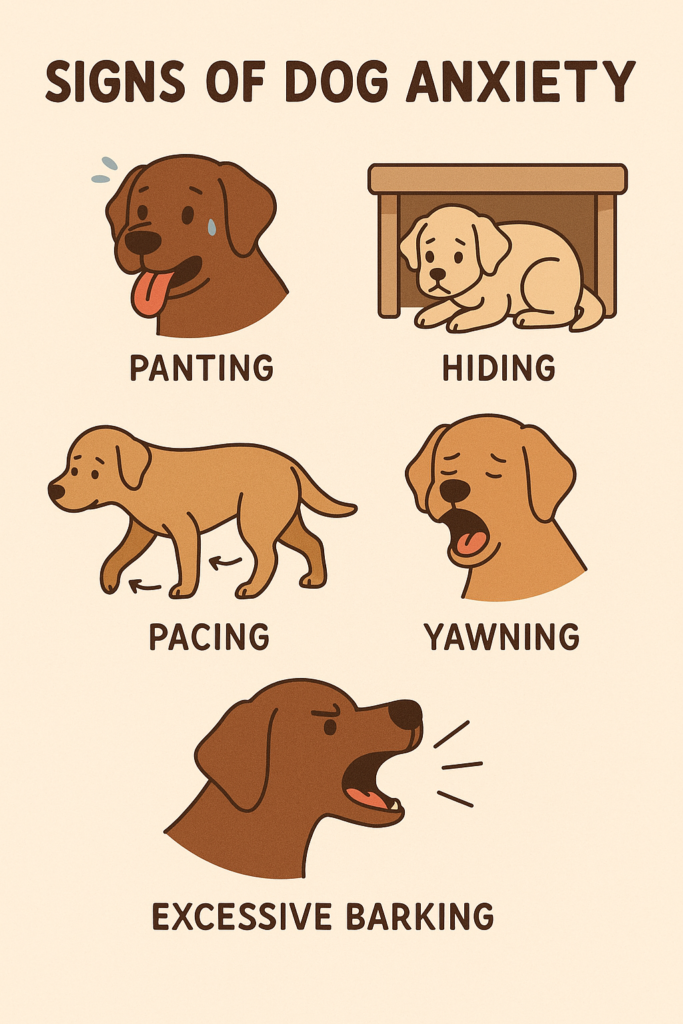
Spotting dog anxiety early is the first step to helping your pet. While some signs are obvious, others can be subtle or mistaken for disobedience. Pay close attention to your dog’s body language and behavior in different situations.
Physical and Behavioral Signs
Common signs of dog anxiety include:
- Trembling or shaking, especially when not cold
- Panting heavily even when at rest
- Excessive barking or howling
- Pacing or inability to settle
- Destructive behavior, like chewing furniture or digging
- Clinginess, following you room to room
- Dilated pupils, drooling, or lip licking
- Hiding under beds or in closets
- Inappropriate urination or defecation
These behaviors may occur suddenly or gradually worsen over time.
Subtle Cues and Displacement Behaviors
Some dogs show less obvious signs of anxiety:
- Yawning when not tired
- Stretching frequently
- Sniffing the air or floor without cause
- Whale eye (showing the whites of their eyes)
- Avoiding eye contact or turning their head away
These signs are often seen during mild dog anxiety episodes or early stages of discomfort.
5-Minute Home Anxiety Checklist
Use this quick checklist to assess your dog:
| Symptom | Observed Recently? |
|---|---|
| Trembling or pacing indoors | ✅ / ❌ |
| Excessive vocalizing | ✅ / ❌ |
| Destroying toys or furniture | ✅ / ❌ |
| Hiding or escaping behavior | ✅ / ❌ |
| Loss of appetite | ✅ / ❌ |
| Avoiding touch or handling | ✅ / ❌ |
| Clinginess or shadowing owner | ✅ / ❌ |
If you’ve checked 3 or more boxes, your dog may be suffering from dog anxiety and a veterinary consultation is recommended.
Common Causes of Dog Anxiety
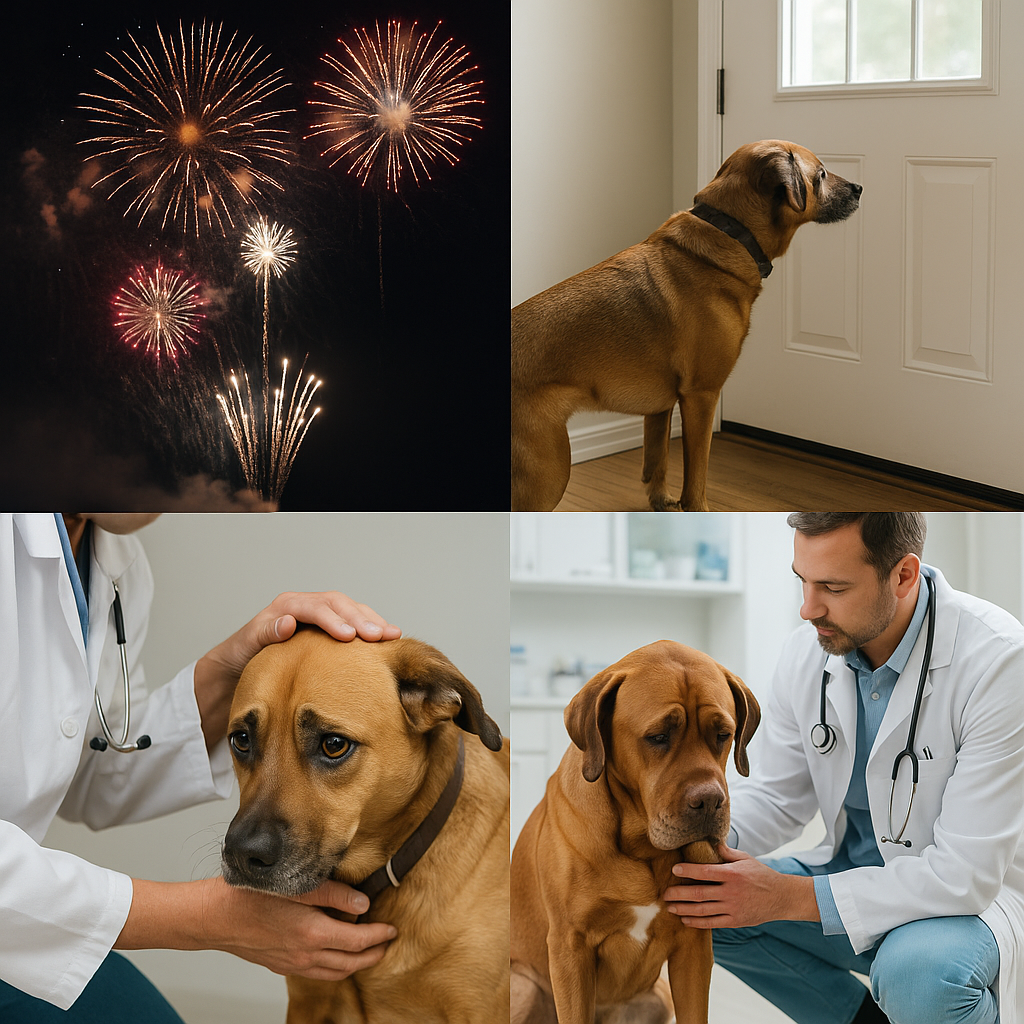
To effectively manage dog anxiety, you need to understand its root causes. Anxiety can stem from environmental factors, medical conditions, genetics, or past experiences. Sometimes, it’s a combination of these.
1. Separation Anxiety
One of the most common forms of dog anxiety is separation anxiety. Dogs with this issue become extremely distressed when left alone. They may howl, destroy household items, or even try to escape by scratching at doors or windows.
Triggers include:
- Being left alone for extended periods
- Change in guardianship (e.g., adoption)
- Sudden changes in routine
2. Noise Phobia
Dogs with dog anxiety often fear loud or unexpected sounds like:
- Fireworks
- Thunderstorms
- Vacuum cleaners
- Construction noise
This can lead to hiding, trembling, or trying to flee the home. Many pet owners only discover this during events like Canada Day fireworks.
3. Traumatic Past Experiences
Rescue dogs or those that have been rehomed multiple times often carry emotional scars that show up as dog anxiety. Abuse, neglect, or previous abandonment can have lasting impacts.
4. Medical Conditions
Pain or illness can lower a dog’s threshold for stress, making them more anxious. Common medical contributors include:
- Arthritis
- Chronic ear infections
- Dental disease
- Vision or hearing loss
- Cognitive Dysfunction Syndrome (CDS)
As dogs age, they can develop confusion and disorientation similar to dementia in humans. This age-related dog anxiety can appear as nighttime restlessness or increased vocalization.
5. Lack of Socialization
Dogs that weren’t properly socialized during their critical puppy period (3–14 weeks) are more prone to dog anxiety. These dogs may react fearfully to strangers, other dogs, or new environments.
Types of Anxiety in Dogs
Understanding the specific type of dog anxiety your pet has is crucial for tailoring treatment. Different types have unique triggers, symptoms, and solutions.
Separation Anxiety
What it is: Distress when a dog is left alone or separated from their primary caregiver.
Signs:
- Excessive barking or whining after you leave
- Destructive chewing at doors or windows
- House soiling despite being trained
What helps: Gradual desensitization to departures, creating a calm routine, and in some cases, prescription medication.
Noise Phobia
What it is: Fear or panic in response to loud sounds.
Common triggers: Thunderstorms, fireworks, vacuums, and household alarms.
What helps: Counterconditioning using sound desensitization programs, anxiety wraps, safe spaces, or medications during events.
Generalized Anxiety
What it is: Persistent fear or nervousness not tied to a specific trigger.
Signs:
- Constant pacing
- Difficulty relaxing
- Hypervigilance or exaggerated startle response
What helps: Daily exercise, behavioral therapy, calming supplements, and structured routines.
Age-Related Anxiety
What it is: Anxiety stemming from age-related cognitive decline.
Signs:
- Disorientation
- Nighttime waking and vocalization
- Confused behavior in familiar environments
What helps: Medications like selegiline, brain-health diets, and maintaining a predictable daily routine.
Social Anxiety
What it is: Anxiety around unfamiliar people, dogs, or places.
Signs:
- Growling, barking, or hiding in new settings
- Avoidance or frozen posture in group environments
What helps: Controlled exposure using positive reinforcement, socialization classes, or help from a certified trainer.
Each form of dog anxiety needs a customized approach, especially when multiple types overlap. For example, a dog with both separation and noise anxiety may need environmental support and training in multiple areas.
Managing Dog Anxiety: What Vets Recommend
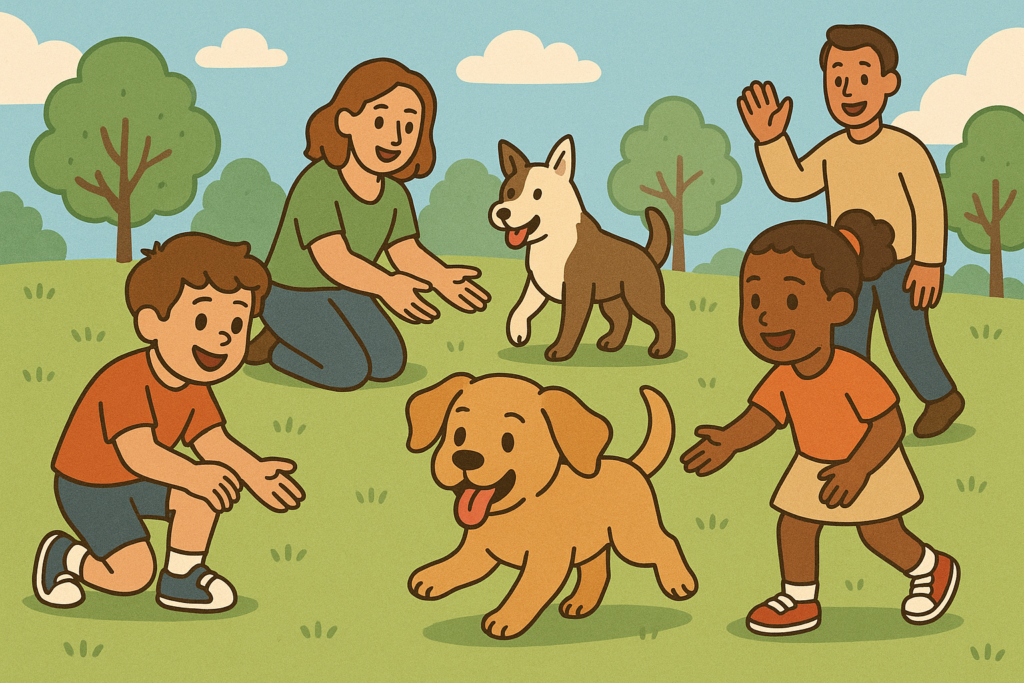
A thoughtful, multi-pronged approach is often the most effective way to manage dog anxiety. This means addressing the root cause while providing tools to ease symptoms and improve quality of life.
Veterinary Diagnosis: What to Expect
Your first step should be a visit to your vet. A complete physical exam can rule out medical causes like chronic pain, thyroid issues, or neurological disorders that may worsen or mimic dog anxiety.
Expect your vet to ask about:
- Specific behaviors and when they occur
- Duration and intensity of symptoms
- Recent changes in home life or routine
In more complex cases, your vet may refer you to a veterinary behaviorist for a formal diagnosis and treatment plan.
Behavioral Training and Desensitization
For most dogs, training plays a vital role in reducing anxiety. Effective strategies include:
- Desensitization: Gradually exposing your dog to a low-intensity version of their fear trigger (e.g., recorded fireworks).
- Counterconditioning: Teaching your dog to associate a previously stressful situation with something positive, like treats or praise.
Working with a Certified Professional Dog Trainer (CPDT) can help you develop a structured, personalized plan. Look for trainers who use force-free, positive reinforcement methods. You can find qualified professionals through www.ccpdt.org.
Medications and Supplements
If behavior changes aren’t enough, your vet may recommend medication. These are especially helpful for severe or chronic dog anxiety.
Common prescriptions:
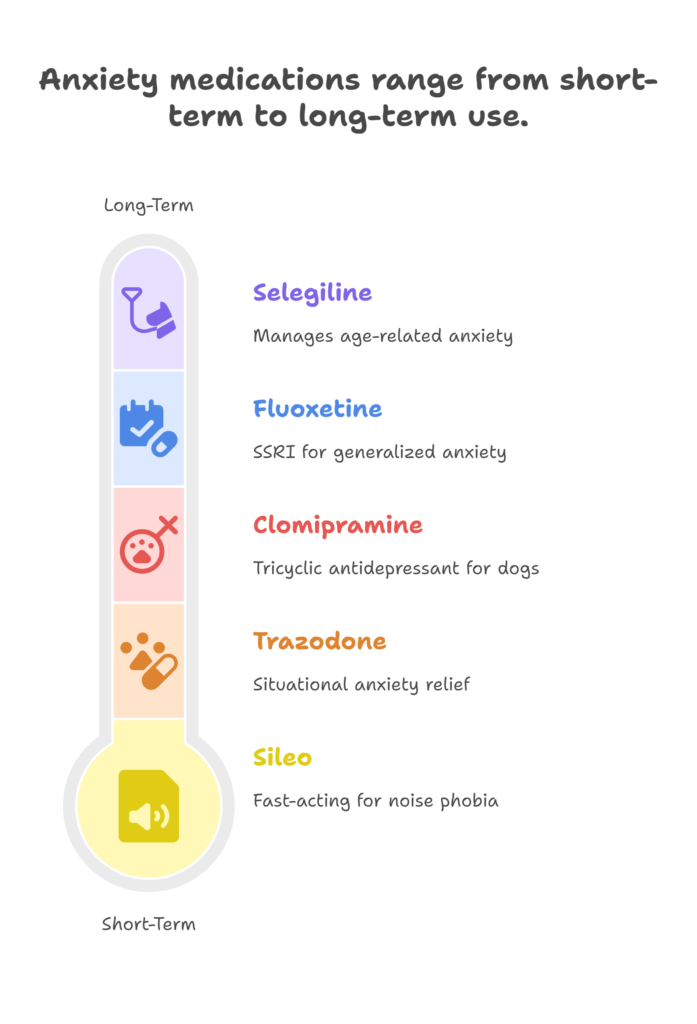
Dogs on medication should have regular check-ups and bloodwork to monitor side effects.
Natural Options: What Works and What Doesn’t
Natural therapies can support other treatments, but they’re not one-size-fits-all.
- Pheromone Diffusers (like Adaptil): Mimic maternal calming scents. Can be helpful in mild dog anxiety cases (Chewy link).
- Zylkene: Milk protein supplement that may reduce mild stress (Zylkene on Chewy).
- CBD oil: Some owners report benefits, but current veterinary evidence is mixed. Consult your vet before use (AKC info).
- Calming treats: May include L-theanine, chamomile, or melatonin. Effectiveness varies.
Avoid essential oils without veterinary guidance, as many are toxic to dogs.
Creating a Calming Environment
Environmental management is essential for reducing dog anxiety triggers:
- Safe spaces: Use a crate, closet, or quiet room with familiar bedding and white noise.
- Anxiety wraps: Like Thunder Shirts, which apply gentle, calming pressure (ThunderEase).
- Routine: Dogs thrive on predictable schedules. Stick to consistent meal, walk, and sleep times.
By combining these strategies, you can help your dog feel safer and more in control of their world.
Preventing Anxiety Before It Starts
Preventing dog anxiety is much easier and more effective than treating it later. Whether you’re raising a puppy or caring for an adult dog, small daily actions can build confidence and emotional stability.
Early Socialization: The Golden Window
The most important period for socializing a dog is between 3 and 14 weeks of age. Positive exposure during this time reduces the risk of future anxiety.
Tips for early prevention:
- Introduce your puppy to a variety of people, animals, sounds, and surfaces.
- Keep experiences short, safe, and fun.
- Use treats, toys, and praise to create positive associations.
- Veterinary behaviorist Dr. Sophia Yin’s Perfect Puppy in 7 Days is an excellent guide for puppy owners (Amazon link).
Building Confidence in Adult Dogs
It’s never too late to help an adult dog build resilience against dog anxiety.
- Stick to routines: Feed, walk, and train at the same times each day.
- Use positive reinforcement: Reward calm, brave behaviors ignore mild fear unless guidance is needed.
- Avoid punishment: It can increase fear and worsen anxiety.
- Provide enrichment: Use puzzle toys, training games, and new walking routes to stimulate the brain.
Dogs with stable routines and frequent mental stimulation tend to be more emotionally balanced.
Managing Stressful Situations
Prevent setbacks by planning ahead:
- New environments: Bring familiar bedding and toys when traveling.
- Loud events: Prepare for fireworks or storms by setting up a safe space early.
- Vet visits: Use pre-visit medications if needed, and always bring high-value treats.
By reducing the frequency and intensity of scary events, you lower your dog’s risk of developing or worsening dog anxiety.
Cost of Treating Dog Anxiety in Canada
Helping a dog with dog anxiety can be an emotional and financial investment. While some solutions are affordable and DIY-friendly, others like training programs or medication may require ongoing costs. Here’s a breakdown of typical expenses in Canadian dollars:
Typical Costs for Dog Anxiety Care (CAD)
| Item/Service | Average Cost (CAD) | Frequency |
|---|---|---|
| Veterinary consultation | $100–$150 | One-time or annual |
| Behaviorist consultation (board-certified) | $300–$600 | One-time or as needed |
| Private dog trainer (per session) | $75–$150 | Weekly or biweekly |
| Group training class (6 weeks) | $200–$350 | Per program |
| Fluoxetine prescription (monthly) | $30–$60 | Ongoing |
| Calming pheromone diffuser (Adaptil) | $45–$65 | Every 4–6 weeks |
| CBD oil supplement | $60–$90 | Monthly |
| Thunder Shirt or anxiety wrap | $50–$80 | One-time |
| Enrichment/puzzle toys | $20–$50 | One-time or as needed |
While not all dogs need every item on this list, a tailored combination of services and tools can help manage dog anxiety effectively without unnecessary spending.
Tip: Ask your vet about product samples or rebates on medications or supplements. Many clinics have access to manufacturer discounts.
Fireworks and Other Triggers: A Real-World Example
One of the most common and predictable triggers of dog anxiety in Canada is fireworks. Whether it’s Canada Day, New Year’s Eve, or summer festivals, the loud explosions and flashes can be terrifying for many dogs.
As a vet, I always prepare my clients ahead of these events, especially if their dog has shown signs of fear in the past. Here’s how to help your dog manage this intense but temporary stressor.
Step-by-Step Fireworks Anxiety Prep
1. Plan Ahead
Don’t wait until the fireworks start. Prepare the environment earlier in the day.
2. Create a Safe Zone
Set up a quiet room or crate with your dog’s favorite bedding, toys, and some white noise or calming music. Close windows and curtains to reduce noise and light flashes.
3. Use Calming Aids
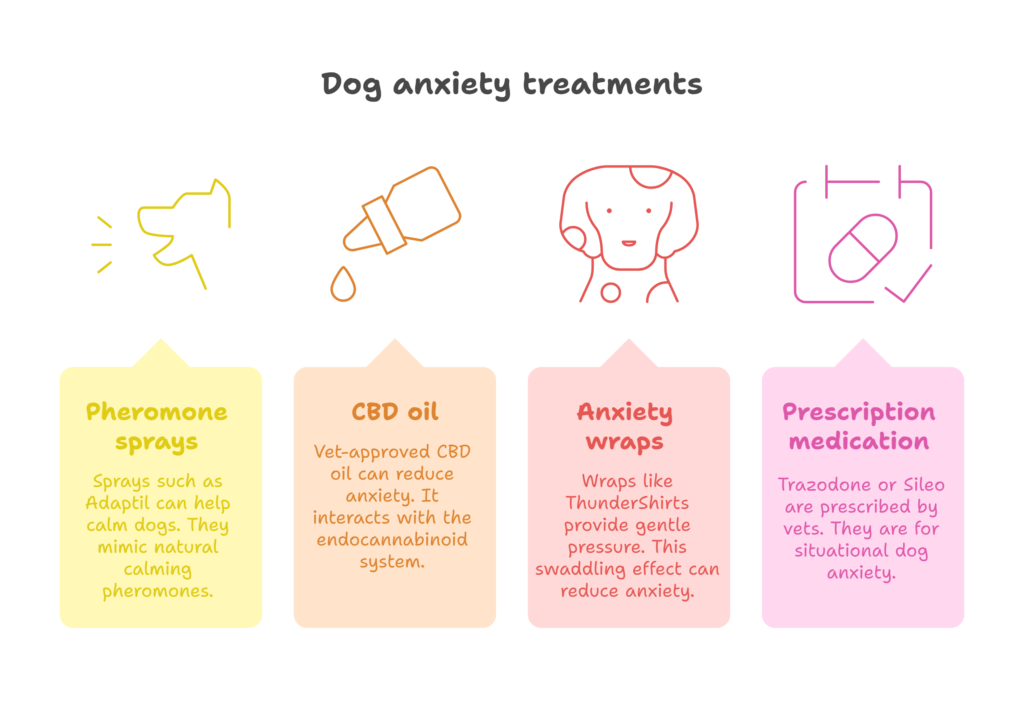
4. Provide Distractions
Stuffed Kongs, lick mats, or puzzle toys with high-value treats can redirect focus.
5. Ensure Safety
Always keep your dog indoors. Double-check fences, gates, and windows. Make sure ID tags and microchips are up to date in case your dog escapes.
6. Inform Visitors
If you’re hosting guests, let them know your dog may be anxious. Post a note near the dog’s safe space to remind others to give them space.
This same protocol works for other predictable triggers too, such as thunderstorms or construction noise near your home.
When to Seek Professional Help
Not all cases of dog anxiety can be managed at home. If your dog’s symptoms are severe, getting worse, or affecting daily life, it’s time to involve a professional. The earlier you intervene, the better the outcome.
When to Call the Vet
Consult your veterinarian if:
- Your dog shows persistent anxiety (daily or weekly episodes)
- You suspect pain or illness is contributing
- Home remedies and training haven’t helped
- There’s destructive behavior, self-harm, or aggression
- You need medication options or specialist referrals
Veterinarians can diagnose the type of dog anxiety, rule out medical problems, and prescribe appropriate treatments or refer to behavior experts.
Certified Dog Trainers vs Behaviorists
There are two types of professionals who can assist beyond your regular vet:
| Expert | What They Do |
|---|---|
| Certified Professional Dog Trainer (CPDT) | Trained in canine behavior and learning. Uses force-free techniques to reduce fear and teach coping skills. Find one via www.ccpdt.org. |
| Veterinary Behaviorist (DACVB) | A licensed vet with advanced training in behavior. Can diagnose and treat complex dog anxiety using medical and behavioral approaches. See Tufts Behavior. |
If you’re unsure where to start, ask your family vet. They’ll help guide you to the most appropriate level of care.
FAQs About Dog Anxiety
These are some of the most common questions Canadian dog owners ask when dealing with dog anxiety. Each answer is based on veterinary insight and current best practices.
What are natural remedies for dog anxiety?
Natural options include pheromone diffusers, calming supplements like Zylkene, and anxiety wraps. Some dogs respond well to CBD oil, though you should consult your vet first. Keep in mind that natural doesn’t always mean effective or safe avoid using essential oils without veterinary guidance.
Can I leave an anxious dog home alone?
If your dog has separation anxiety, leaving them alone may trigger severe distress. You can help by gradually desensitizing them to short departures, creating a cozy safe space, using treat puzzles, and possibly consulting a trainer or vet. In more serious cases, anti-anxiety medication may be required.
How long does it take for anxiety meds to work?
It depends on the medication. SSRIs like fluoxetine or clomipramine may take 4–6 weeks to show full effects. Fast-acting meds like trazodone or Sileo can work within an hour for situational dog anxiety. Your vet will guide you on timing and dosage.
Is CBD safe for dogs with anxiety?
The safety and effectiveness of CBD oil for dogs is still being studied. Some owners report improvements, but quality and dosing can vary. Discuss with your vet before using any CBD products, and ensure they are made specifically for pets.
Do calming wraps like Thunder Shirts really help?
Many dogs benefit from anxiety wraps, which apply gentle pressure to calm the nervous system similar to swaddling a baby. While not a cure-all, they can be part of a larger anxiety management plan, especially during storms or fireworks.
Summary Table: Best Ways to Manage Dog Anxiety
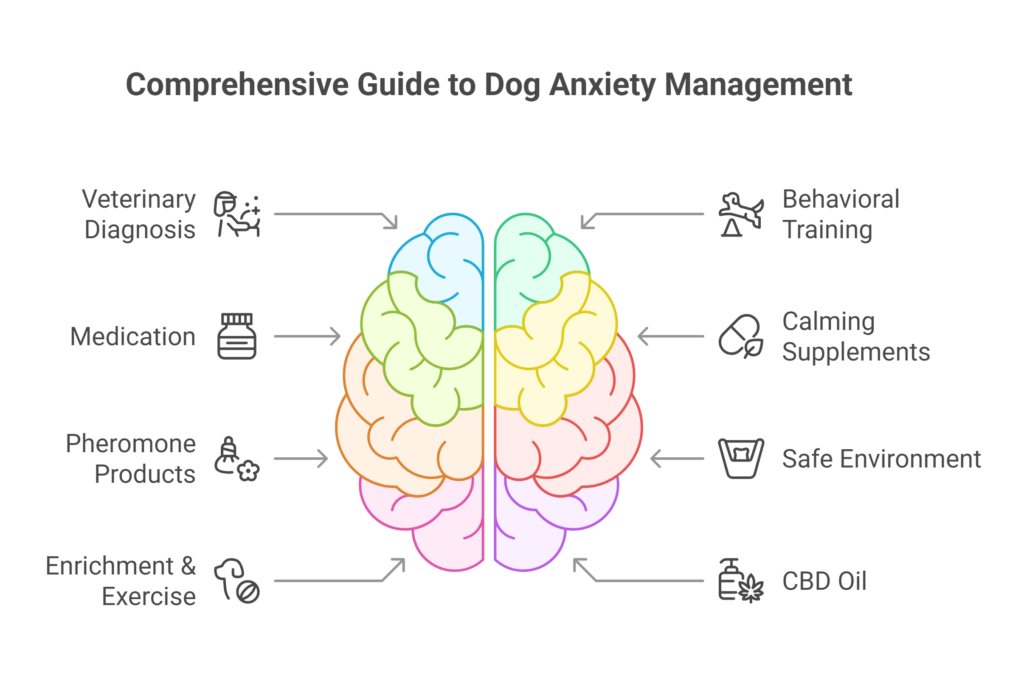
A customized plan using two or more of these strategies often yields the best long-term results for dog anxiety.
Conclusion:
Dog anxiety can feel overwhelming for both the dog and the pet parent. But with understanding, patience, and the right tools, anxious dogs can lead joyful, relaxed lives.
From my experience in clinic, I’ve seen dogs transform from nervous wrecks into confident companions with the help of structured routines, behavioral therapy, and sometimes, medication. One rescue patient of mine used to chew through drywall during thunderstorms. With a ThunderShirt, daily enrichment walks, and low-dose fluoxetine, she became calm enough to cuddle on the couch during the next storm.
Every dog is different, so don’t get discouraged if it takes time to find the right combination of strategies. Work closely with your veterinarian and consider support from a certified trainer or behaviorist. Remember, you’re your dog’s best advocate and they’re counting on you to guide them through their anxiety.

